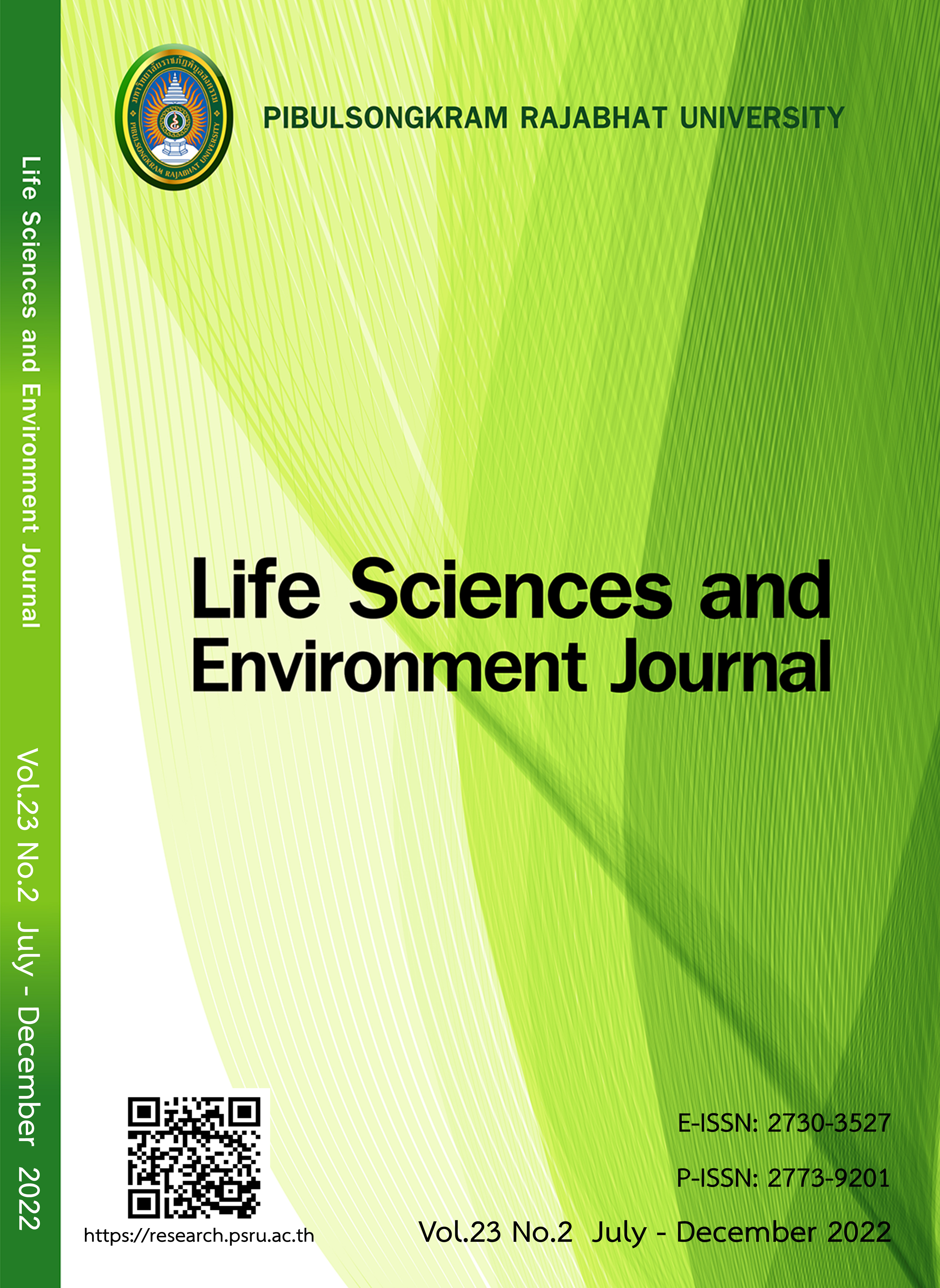FLUVIAL GEOMORPHOLOGY IN MAE RIM BASIN
DOI:
https://doi.org/10.14456/lsej.2022.34Keywords:
Geomorphology, Terrain analysis, TPI, Fluvial landformsAbstract
This research aimed to investigate the spatial context of the Mae Rim River Basin, study the types of geomorphologies and classification caused by the fluvial process of the Mae Rim River, and create a geomorphology map of the study area. The study area is located in Mae Rim River basin in Saluang Sub district, Mae Rim District, and San Pa Yang Sub district, Mae Taeng District, Chiang Mai Province. Topography was analyzed using 30-meter SRTM 1 Arc-Second Global high-level numerical model data. Then the Topographic Position Index (TPI) was calculated using SAGA GIS. The results showed that more than 60% of the studied areas are mountainous and hilly terrain. Its sloping towards the east. The elevation is from 340 - 1440 meters above sea level. Most of the rock units are sedimentary and metamorphic and igneous rocks. The sediments of the riverbeds and the stream sediments were found in the eastern plain. The main river is the Mae Rim River. In terms of geomorphology, there are 10 types of geomorphology, including areas of open slope, plains, mild slope ridges, mild slope drainages, valleys, upper slopes, high ridges, streams, upland drainages, and local ridges.
References
Charoenporn P. Automated mapping of landforms from a Digital Elevation Model (DEM), 2015. Available at: https://www.arts.chula.ac.th/geography/Senior%20project/Senior-project2015. html. Accessed December 16, 2020.
De Reu J, Bourgeois J, Bats M, Zwertvaegher A, Gelorini V, De Smedt P. et al. Application of the topographic position index to heterogeneous landscapes. Geomorphology 2013;186(15):39-49.
Eiumnoh A. Application of remote sensing in geomorphology. Geographical Journal 1981;6(2):23-44.
Jenness J. Topographic Position Index (TPI), 2006. Available at: http://www.jennessent.com/ arcview/tpi.html. Accessed December 16, 2020.
Land Development Department. Chiang Mai land use data [Shape file]. Available at: http://dinonline.ldd.go.th/Login.aspx?service=3. Accessed January 19, 2021.
Office of Soil Survey and Land Use Planning. The miracle of soil, 2005. Available at: http://e-library.ldd.go.th/library/flip/bib348f/bib348f.html Accessed January 20, 2021.
Weiss A. Topographic position and landforms analysis, 2001. Available at: http://www.jennessent. com/downloads/tpi-poster-tnc_18x22.pdf. Accessed January 16, 2021.
Wilson J, Gallant J. Digital terrain analysis. In J. C. Gallant and J. Wilson (Eds). Terrain Analysis: Principles and Applications. New York: John Wiley & Sons; 2000:1-27.
Wongon N, Suwanweerakamtorn R. Landform classification using topographic position index in Northeastern Region of Thailand. Journal of Remote Sensing and GIS Association of Thailand 2019;20(1-2):1-8.
Downloads
Published
How to Cite
Issue
Section
License
Copyright (c) 2022 Life Sciences and Environment Journal

This work is licensed under a Creative Commons Attribution-NonCommercial-NoDerivatives 4.0 International License.
Each article is copyrighted © by its author(s) and is published under license from the author(s).










